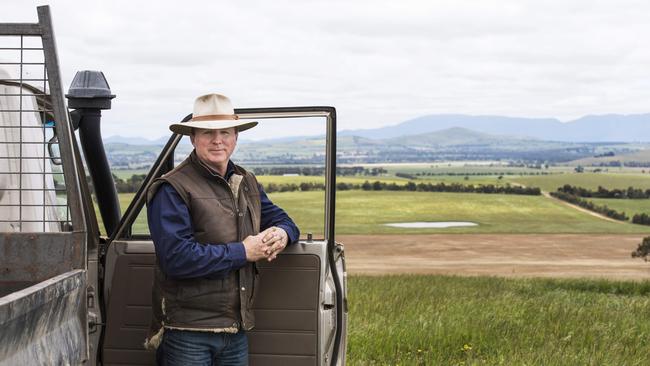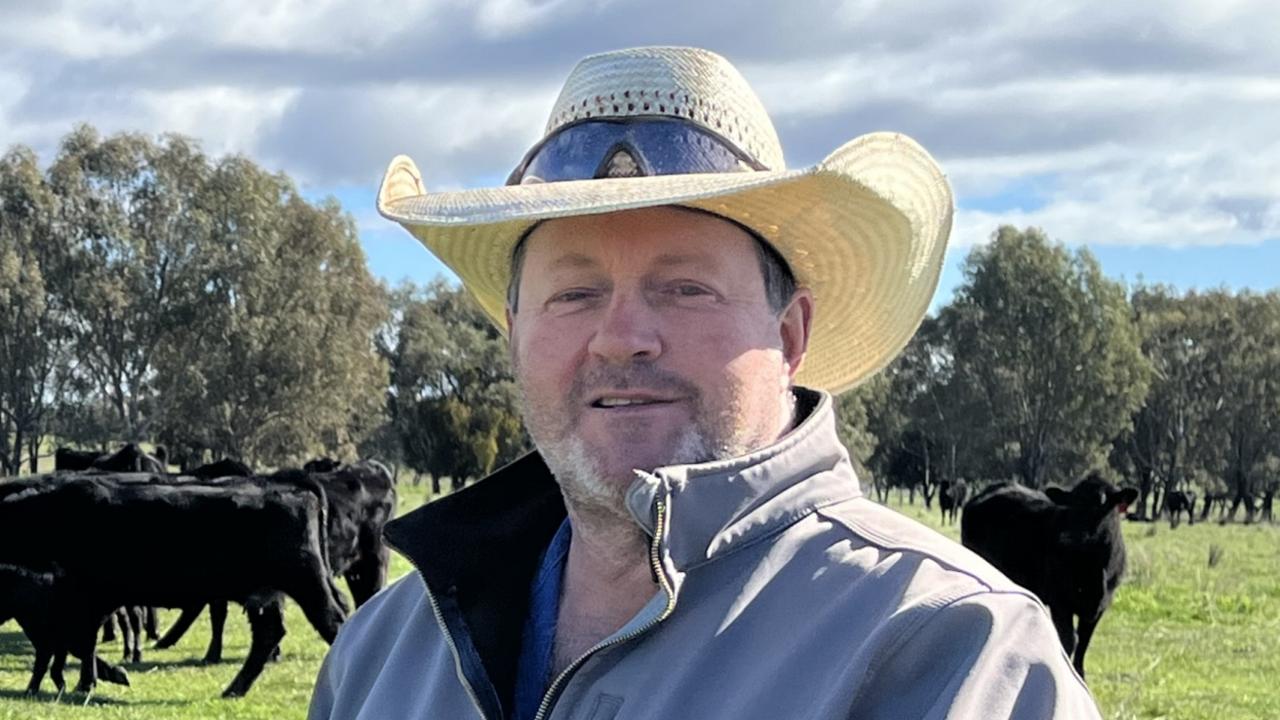Lamb production: Craig Hinchliffe’s Glenlee Farm, Ararat, primed for success
A SOUND pasture strategy brings out the best in Craig Hinchliffe’s sheep flock in western Victoria, writes JAMES WAGSTAFF.

CRAIG Hinchliffe is clearly at peace with the world.
Casually negotiating a mob of sheep through waist-high pasture, the former army lieutenant colonel and foreign aid worker pauses to take in breathtaking views across his paddocks to the Grampians in the distance.
It is abundantly obvious, from the look on the 52-year-old’s face, and the passion in his voice, that Craig is relishing his latest posting: that of fulltime farmer.
Not that he is a newcomer to the agriculture game. Craig’s forebears first settled his-now 750ha Glenlee Farm, south of Ararat, some 164 years ago, and he has often worked its paddocks between deployments over the past three or so decades.
But now, back on the farm, he is committed to achieving the best-possible returns from his Poll Dorset, White Suffolk and Dorper ewes, which turn off about 3000 lambs a year. He has been unafraid to invest in pastures and paddock infrastructure, and is the driving force behind a new paddock-to-plate lamb venture he hopes will maximise profits.
PADDOCK TO PLATE: WILD GRAMPIANS LAMB, ARARAT, SERVES IT UP
FAMILY AFFAIR
CRAIG is the fifth generation of his family to work Glenlee Farm. It was settled by William Hinchliffe in 1862.
Over the past 35 years, the property has recorded an average 500mm of rain annually. Craig said conditions were dry this year until September “and then it came down”.
Soils are mostly “beautifully textured” basalts, which, Craig said, provided a good source of potassium. Soil tests are conducted annually and the Hinchliffes grow legume crops to help add nitrogen.
“Sometimes sulphur is needed, particularly when you’ve got livestock consuming a fair bit of natural minerals from the plants,” he said. “We do as much as we can with the plants reconditioning the soil.”
Craig said the family had toyed with the idea of organic farming, but decided tilling the soil released carbon into the atmosphere “and you’re losing your carbon-nitrogen ratios essential for plant health”.
“We find strategic use of herbicides is probably more ecologically sustainable than doing a plough and working up the soil,” Craig said. “We need to try to keep grass cover all year round because we are getting hotter and longer summers.”

CASH SPLASH
CRAIG says no money has been spared in establishing the best pasture base. He works on a ratio of 70 per cent legumes and 30 per cent grass.
“That gives us a tremendous base for getting the enhanced nutritional density in the red meat profile, particularly omega 3 levels, and beneficial branch-chain amino acids and short-chain fatty acids that are critical to healthy eating,” he said.
“Multi-species pastures really condition the soil and enhance microbial activity, so with the right combinations we’re fixing nitrogen, and it gives us a longer growing season for the grasses.
“You find that where you’ve got greater legume establish-ment, the grass will stay greener longer into summer, and it will be earlier to establish for autumn-winter.”
Craig renovates 20-30 per cent of pastures a year with varieties such as lucerne, clover, phalaris and tonic plantain.
“In about four years’ time, we should have renovated just about everything,” he said.
“It costs a lot of money, and you’ve got to get a premium return. Because we are doing this, we’ve got a nutritional profile in our lamb that is unrivalled.”
The Hinchliffes sow crops such as red wheat, matika oats and barley “but only so that we are a closed system for hay and grain” to fill seasonal feed gaps.
FLOCK TOPS
CRAIG said his sheep flock was geared around condition and genetics.
The ewe flock is predominantly Poll Dorset based, joined to White Suffolk and, more recently, Dorper rams.
Rams are joined to ewes at a rate of 1:100 in late February and March, with pregnancy scanning in April. At that point, any ewe not pregnant, or not meeting condition score requirements, is culled.
Craig said they used White Suffolk rams to “find that happy medium between clean faces and clean points to reduce the potential risk of flystrike, and easy handling” while with the Dorpers he was keen to “see what comes out”.
The Hinchliffes have tried a staggered lambing in recent years “to see if there’s any benefit from a survivability perspective, of lambing in autumn, winter and spring”.
Craig said there was no increase or decrease in losses across the three seasons. “It’s very much about management and stock condition,” he said.
With all meat science indicating “the more stressed an animal is, the higher the pH, the higher the glycogen and the tougher the meat is” he runs his self-replacing ewe flock in multi-generational mobs. “We find the best way of keeping low stress in the environment is to have ewe lambs with their mothers, with their grandmothers, with their great-grandmothers and with their great-great grandmothers,” he said.
“The lambs learn off their mums ... they move around the country, they know what plants are growing where and what can be eaten, they know where the water points are.
“If we had a single sex, single age mob, there’d be a lot more hierarchy, a lot more tension, a lot more stress.”
SHEEP SHAPE
LAMBS are sold at restocker, trade or export weights to a raft of markets whether they be abattoirs or online through AuctionsPlus.
“Because of our genetic base we could take all of our lambs through to export (weight),” Craig said.
He is one of the driving forces behind the launch of the Grampians Wild Lamb paddock-to-plate program, aimed at finding high-end customers, whether they be domestic or international, for local family farm-produced lamb.
The brand is under development with suppliers and markets being sourced. Craig said farmers deserved to be duly rewarded for quality product.
“A lot of people say lamb prices have never been better, but that’s a pretty superficial analysis,” he said. “Lamb prices have never been better in comparison to what point in time or what set of input costs? I would say that the input costs have never been higher in comparison to return for product.
“In real terms, my grandfather and my father probably received more in financially adjusted terms for their lamb than we do today.”


